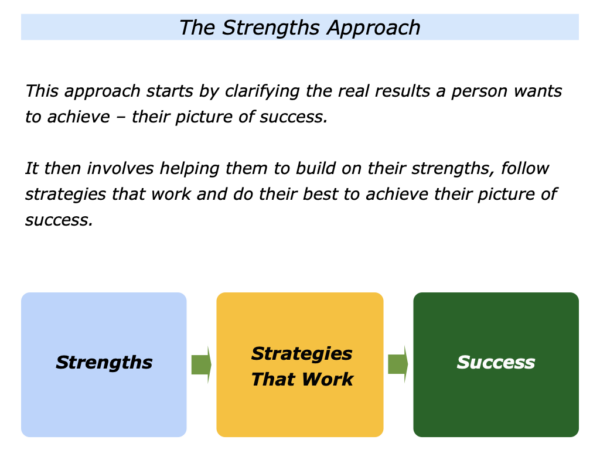
There are many ways to help people to achieve their goals. The strengths approach starts by clarifying the real results a person want to achieve and translating these into a clear picture of success.
It then involves helping them to build on their strengths, follow strategies that work and do their best to achieve success. This section explores how to translate this into action. Before then, however, a little background on the strengths approach.
Bernard Haldane, Don Clifton, Tom Rath, Marcus Buckingham, Paul Brewerton, James Brook and Alex Linley were some of the many practitioners who helped to spread this approach.
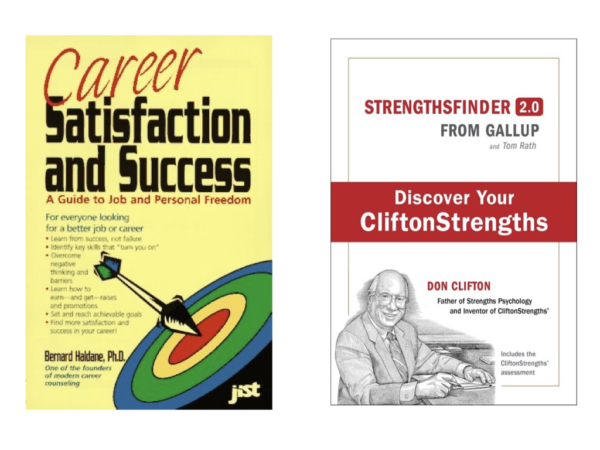
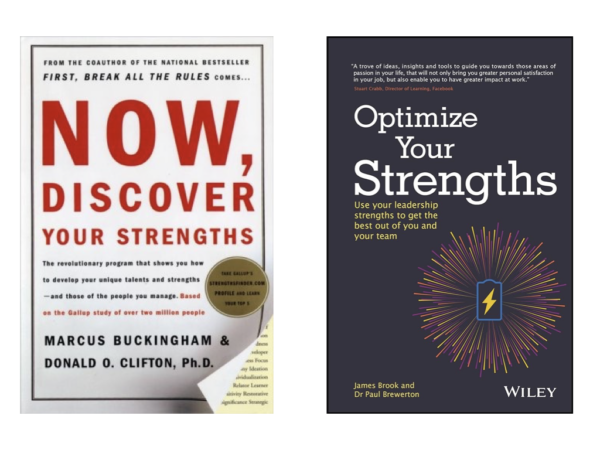
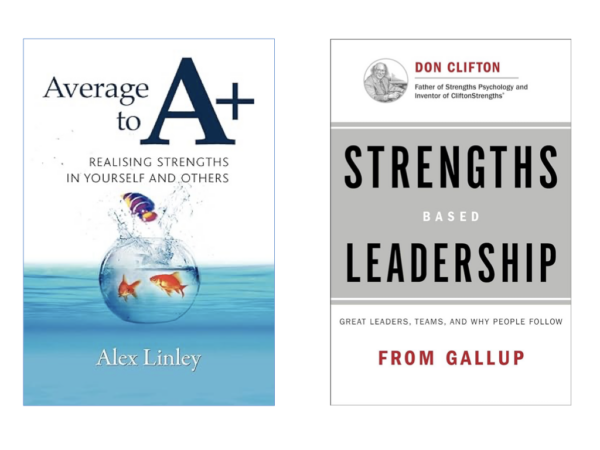
The strengths approach is an organic approach and forms the basis for this book. As indicated earlier, it believes that:
People have the seeds of development within them;
People already have strengths and successful patterns;
People can build on their strengths – plus add other skills – and achieve their picture of success.
The approach combines elements of both Humanistic and Positive Psychology that studies humanity at its best. It then provides practical tools that people can use to follow these principles and achieve their goals.
Some practitioners combine the strengths approach with elements of Positive Psychology, Humanistic Psychology, Existential Psychology or Appreciative Inquiry.
Some then translate this into doing what is often called strengths coaching. Here is an introduction to how this can work in practice. We will explore this approach in more depth later in the book in the section on mentoring.
Clarifying The
Picture Of Success
Imagine that you are running a session with a person who has asked for your help. The first step is to create an encouraging environment in which they feel welcome and at ease.
You can then invite them to describe the specific topics they would like to explore. Some may aim to regain a sense of control, overcome setbacks and refocus on their life goals. Some may aim to encourage other people.
Some may aim to find creative solutions to challenges. Some may aim to do satisfying work that pays a salary. Some may aim to achieve peak performance. Some may aim to leave a positive legacy.
Bearing in mind what the person wants to explore, explain what you can and can’t offer. You can then make clear working contracts.
Moving on to the first topic the person wants to explore, clarify the real results they want to achieve. It can be useful to translate this into a clear picture of success.
Imagine that you have explored this step. Before moving forwards, it can be useful to check you are clear on what the person wants to achieve. Bearing this in mind, you may want to say something along the following lines.
As far as I understand, the real results
you want to achieve in this situation are:
To …
To …
To …
Is that right?
Sometimes you may immediately help a person to focus on solutions to a challenge or reach a goal. If appropriate, you may be able to offer some practical tools they can use to get some early successes.
On other occasions it can be useful to go through the following stages. You can help the person:
To build on their strengths;
To follow strategies that work;
To achieve their picture of success.
Let’s explore how you can go focus on these themes. You will, of course, do this in your own way.
Strengths
Every person has strengths. Bearing this in mind, you can clarify how the person can use these to achieve their goal. Here are some themes it can be useful to explore.
What are the person’s strengths? When do they deliver As rather than Bs or Cs? What are the things that give them positive energy? When are they in their element – at ease and able to excel? When do they flow, focus and finish?
When do they see the destination quickly? When do they go A, B … and then leap to Z? Where do they have the ability to recognise patterns? Where do they have good radar and seem to know what will happen before it happens?
When do they make complicated things simple? What are the specific activities where they enjoy the journey as well as reaching the goal? When do they have a sense of purpose, follow certain principles and achieve their picture of success?
Imagine you have clarified some of the person’s strengths. It is then time to move on to the next stage.
Strategies That Work
The next step to help the person to follow strategies that work. This can involve helping them to learn from both their own and other people’s successes.
Every person has a positive history. They have overcome challenges and worked to achieve specific goals. Bearing in mind what the person wants to achieve, you may want to explore the following themes.
Looking back, when has the person tackled a similar challenge successfully? What did they do right then? What were the principles they followed? How can they follow some of these principles in the future?
When have other people tackled similar challenges successfully? What did they do right then? What were the principles they followed? How can the person follow some of these principles in their own way?
Every person may also benefit by adding certain skills to their repertoire. Bearing this in mind, you may want to explore some of the following themes.
What is the person’s goal? What are the strategies that work in these situations? What are the other skills that the person can add?
How can I help them to build on their strengths – and follow strategies that work – to help them to reach their goal? How can I help them to manage the consequences of any weaknesses?
Imagine that you have explored these themes. It can then be time to move on to the next stage.
Success
You can help the person to do their best to achieve their picture of success. If appropriate, look ahead and help the person to translate their strategies into a clear action plan. Here are some themes it can be useful to explore with the person.
How can they keep building on their strengths and following their successful style? How can they follow strategies that work? How can they get some early successes?
How can they do superb work? How can they encourage themselves on the journey? How can they anticipate and manage potential challenges? How can they do their best to achieve the picture of success?
There are many ways to help people to reach their goals. The strengths approach helps a person to build on their assets and add to their repertoire. It then enables them to do their best to achieve success.
Let’s return to your own life and work. Looking ahead, can you think of a situation where you may want to follow elements of the strengths approach? How can you do this in your own way?
If you wish, try tackling the exercise on this theme. This invites you to complete the following sentences.
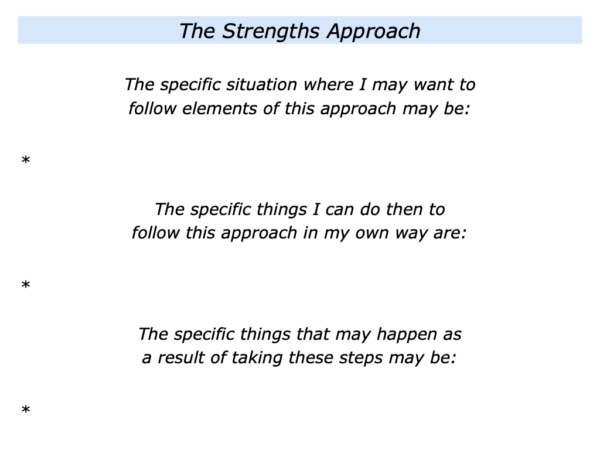






Leave a Reply